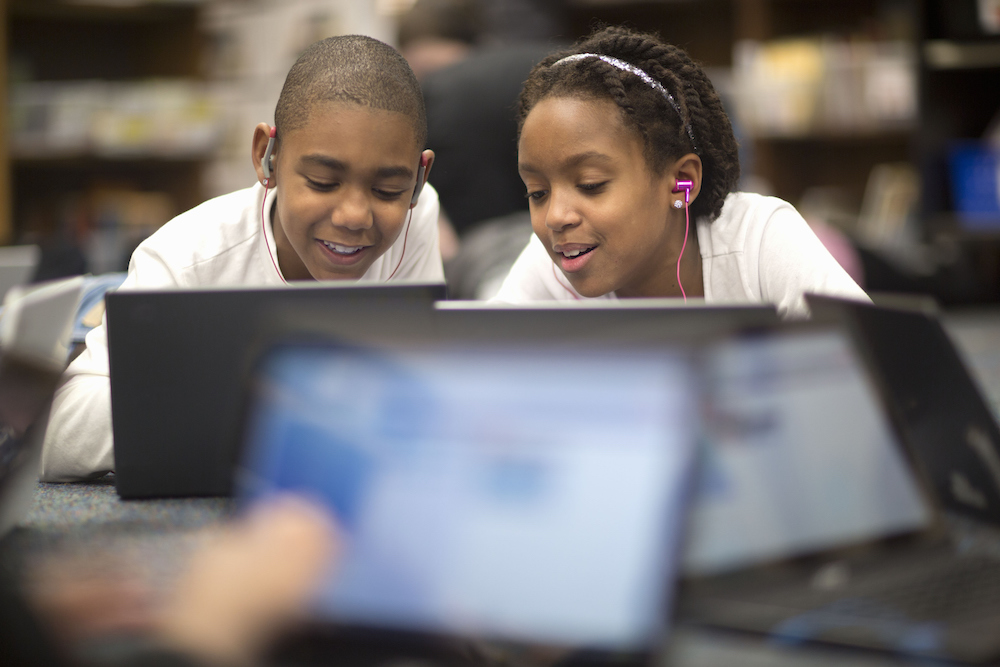Lesson Overview
Students will be able to understand various ways algorithms help shape the content they see on social media and apply these understandings to their own social media feed(s).
Students will be able to understand various ways algorithms help shape the content they see on social media and apply these understandings to their own social media feed(s).

Ready?
Begin Lesson
Many of you probably have an account on at least one type of social media platform — whether that is Instagram, Twitter, Facebook, YouTube, or a whole number of other platforms.
Some of you might also have multiple accounts on different platforms for different purposes. You might use one platform to check out the news, another to connect with your friends, and yet another to watch the latest viral video.
On social media, algorithms are continually being designed to decide what you see. For instance, algorithms can decide how much content you see from your friends, family, and groups versus public content from businesses, brands, and media.
Algorithms can also decide what content format to prioritize, such as video, text-based posts, or images.
Most social media platforms keep track of your engagement with posts by friends, family, and groups, as well as your engagement with public posts from businesses, brands, and media. These platforms’ algorithms can predict what you want to see based on these interactions.
The ultimate goal is to put content in front of you that you are more likely to engage with by putting posts in your feed from the same or similar, people and pages you have interacted with before.
To help us think a little more deeply about how algorithms shape social media feeds, let’s engage in a group activity!
Divide participants into four groups and provide each group with one of the four “Meet Beldine” handouts and the set of 24–32 social media posts in an envelope. There should be four envelopes — one for each group.
In your groups, first, take a look at the set of posts and the information about Beldine provided on your handout. Next, select up to 18 posts and arrange them in an order that you think would create a feed relevant to Beldine. Think about what kind of content Beldine would most enjoy engaging with (e.g., time spent looking at, liking, clicking on, sharing or resharing).
Give participants 15 minutes to engage in this group exercise.
Reconvene all participants, with participants sitting in their group. Ask groups to designate a speaker to present their created feed. Have each group briefly explain 1) what information they received about Beldine, 2) which posts they selected and why, and 3) of the different pieces of information about Beldine provided in their handout what content they focused on to create the feed.
Each group received pieces of information about Beldine. Let’s now bring all the information on Beldine together and think about how (if at all) our understanding of what an ideal feed and underlying algorithm for Beldine might be would change.
Either show the complete set of information about Beldine (“Meet Beldine — A More Complete Picture: Educator’s Copy”) on a projection screen or print out and share a copy with each participant.
Now, let’s apply what you learned today about social media and algorithms to your own social media feed. Choose an account from a specific social media platform and select the first 18 posts that appear. Identify 10 variables that you think the underlying algorithm is focused on (e.g., your engagement with posts from your friend, a local clothing store, or an athletic team).
For those of you interested in the data that informs the algorithm on your own social media feed, you can access and download a copy of the information that social media platforms have about you.
For those who have a Facebook account, log into Facebook on a desktop computer and, on the top right of your home page, click the downward-facing blue arrow. From there, click Settings and then click Your Facebook Information. Then click Download Your Information. Here, you can select which pieces of information you want to download (e.g., ads, location, posts).
For those who have an Instagram account, log into Instagram on a desktop computer and click on the Profile icon in the upper right-hand corner, shaped like a person, and then click on the Settings icon, which looks like a wheel. From there, click on the Privacy and Security button and scroll down to Account Data to click on View Account Data. To look at a specific type of data (e.g., current follow requests, hashtags you follow, accounts you blocked, etc.), click View All.
If you have both a Facebook and Instagram account, feel free to try this exercise on both of these accounts!
Based on this information, I’d like you to reflect, in writing, on the following questions:

Congrats!
You've finished the lesson

Students will learn how to keep their online information more secure by using and maintaining strong passwords.
View Page
Students will learn to recognize unsecured Wi-Fi when it is available to them, understand the trade-offs inherent in using unsecured Wi-Fi, and make informed decisions about when to connect to and use unsecured Wi-Fi.
View Page
Students will learn about malicious online users who might attempt to use security weaknesses to gather information about them.
View Page
Students will learn what information verification is and why it is important for news consumers.
View Page
Students will learn about a five-step checklist they can use to verify the origin, source, date, location, and motivation of news.
View Page
Students will learn how to keep their online information more secure by using and maintaining strong passwords.
View Page
Students will learn to recognize unsecured Wi-Fi when it is available to them, understand the trade-offs inherent in using unsecured Wi-Fi, and make informed decisions about when to connect to and use unsecured Wi-Fi.
View Page
Students will learn about malicious online users who might attempt to use security weaknesses to gather information about them.
View Page
Students will learn what information verification is and why it is important for news consumers.
View Page
Students will learn about a five-step checklist they can use to verify the origin, source, date, location, and motivation of news.
View Page